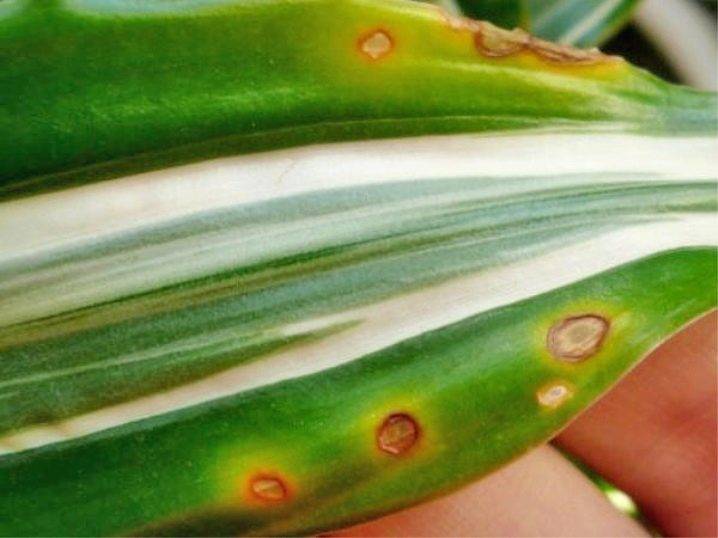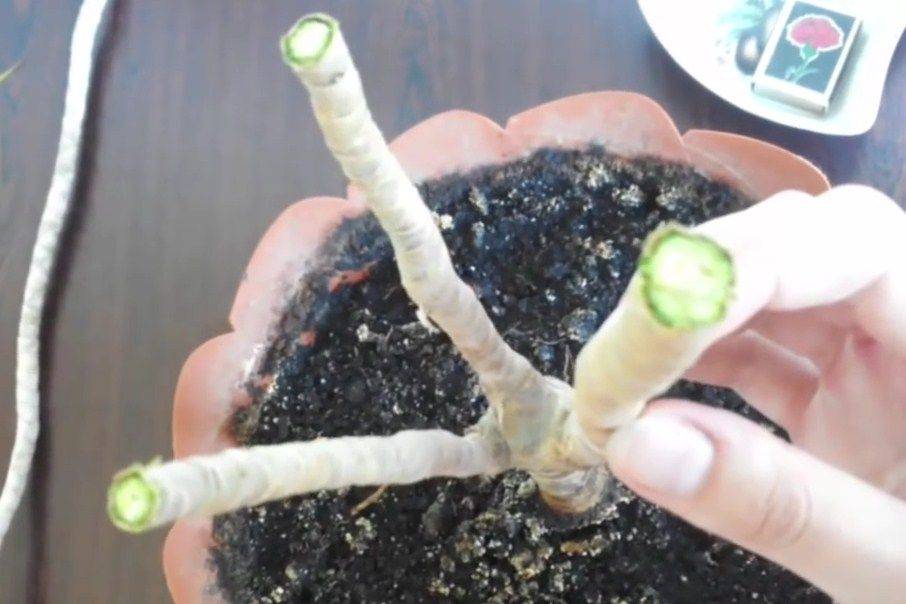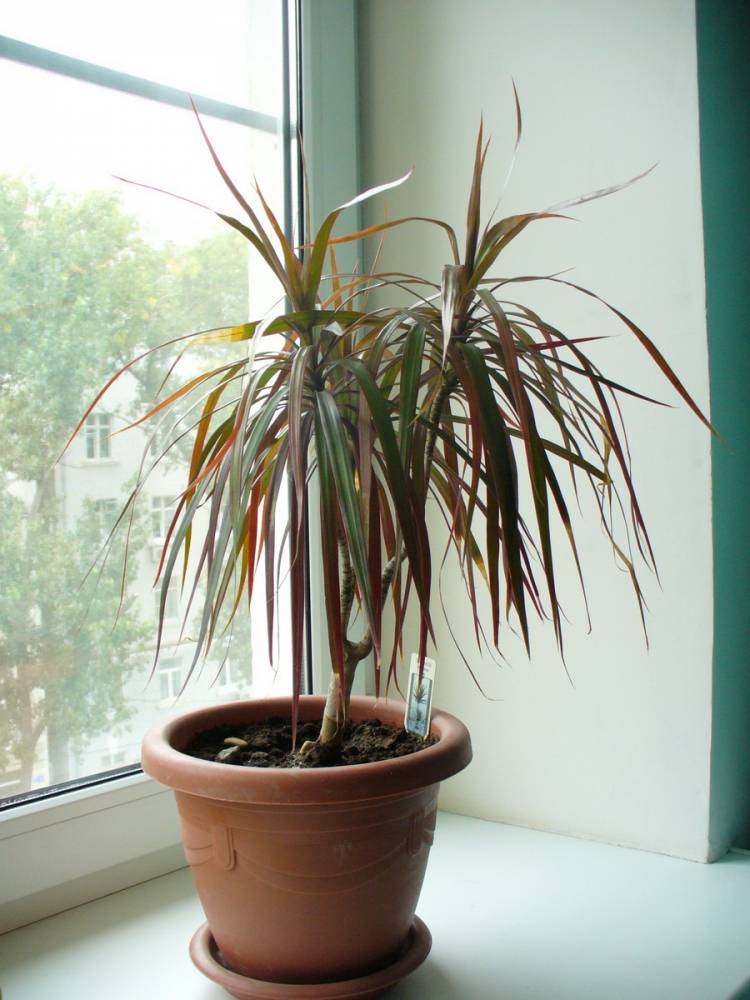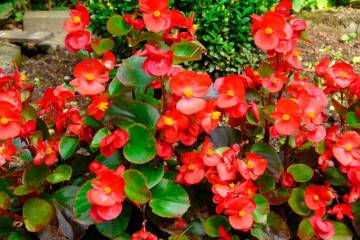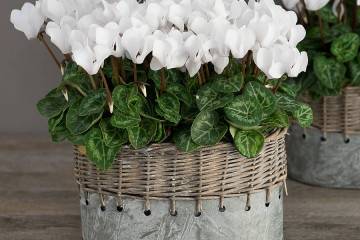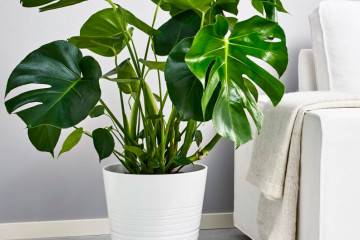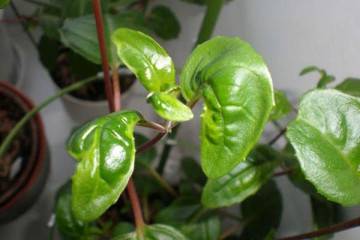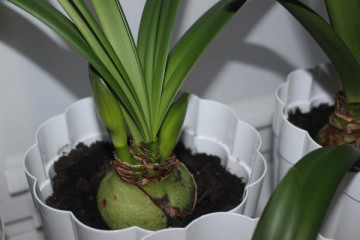Why do dracaena leaves fall down
Content:
The genus Dracaena is very numerous. Today, scientists know over a hundred of its representatives. They all come from the tropics and subtropics. It is the origin that determines the conditions that the grower will need to create for the plant for its growth on the windowsill. Violation of the rules of agricultural technology is the main reason why dracaena leaves go down and may even turn yellow.
Why do dracaena leaves fall down: what could be the reasons
First of all, you need to know that regular yellowing and shedding of the lowest leaves is a natural process that accompanies the growth of a tree. On average, the maximum age of each leaf is 2 years, after which it dies off, and young leaves grow to replace it.
If wilting exceeds the natural rate, covers the crown entirely or more than half, this is a clear sign of a violation of agricultural technology, disease or damage to the tree by any pests.
If the dracaena has dropped the leaves, it is necessary to find out what caused it.
Diseases
Improper care becomes the source of the appearance of various diseases. In a weakened plant, immunity decreases, it becomes defenseless against fungal, bacterial and viral infections. Among the most likely:
- alternaria. Light brown spots with a whitish core appear on the trunk and leaves, gradually becoming gray-black. Treatment with topaz helps against the disease;
- brown spot (phyllostictosis). Irregularly shaped beige-brown spots appear with a lemon-green border along the edge with gradually emerging small black grains. Most often, the disease affects adult palms. For prevention and treatment, every month you need to spray with a solution of foundationol;
- bacteriosis. This is when the leaves turn brown at the tips, small small sores appear on the trunk, the crown quickly begins to turn yellow. A yellow oily stripe is visible between healthy and diseased leaf tissue. There is no cure, since the disease develops for a long time on a weakened plant, whose roots are damaged due to long waterlogging against a background of too hot air temperature. You can try to root a cut shoot if there are no traces of the disease on its leaves, and there is no characteristic brown ring on the cut of wood, indicating a bacteriosis lesion;
- root rot. The roots and the beginning of the trunk turn brown, the soil in the pot becomes covered with a fluffy whitish mold, the dracaena begins to drop its leaves, and a characteristic putrid smell appears. Complete soil replacement, sterilization of the pot, cutting out all diseased tissues with the capture of healthy ones, followed by watering for 3-4 months with a weak solution of Previcura or Baikal-M will help to get rid of the disease.
Pests
Dracaena and pests inherent in most indoor plants do not bypass. If, because of this, the dracaena hung leaves, there are a lot of options for what to do. The most common parasites are:
- shield. On all parts of the plant, characteristic small (1-3 mm in diameter) rounded brown plaques appear. A pest is hiding in them. The green tissues around them acquire a yellow-red color. The most effective control measure is two-time treatment with aktar at an interval of 5-7 days;
- spider mite.It is difficult to see, but tiny cobwebs on all parts of the plant signal its appearance. Only treatments with acaricides help against ticks, among which Sunmayt and Agrovertin have proven themselves well;
- thrips. Their appearance is signaled by discoloration of the leaves, numerous tiny black dots, beige-gray scratches are visible on the seamy side. Three-time treatment with phytoverm or actellik is required with an interval of 5-7 days;
- mealybug. It can be seen in the axils of the leaves. Clusters of the pest resemble a bloom from dirty cotton wool. Against the worm, they are treated three times with an interval of 5-7 days with Mospilan or Spark-Bio solutions;
- aphids are visible to the naked eye. Small green or brown insects. After themselves, a sticky bloom is left on the leaves. The plant must be rinsed under a warm shower, and then treated every 5 days with Admiral or Biotlin solutions until the aphids disappear completely.
Soil moisture
A healthy dracaena is a very moisture-loving plant, which actively absorbs moisture from the soil by its roots. However, you cannot keep the substrate moist all the time. Between watering, the soil should dry out 3-4 cm deep. With a stick, which should be in the pot all the time, it is necessary to regularly check the degree of drying of the substrate. Usually, an adult plant in summer needs watering every 2-3 days, and in winter 2-3 times less often, depending on the temperature of the content and the age of the palm tree.
Broad-leaved species are more demanding for watering, since they have a larger area of moisture evaporation. In hot summer they can be watered every day. Narrow-leaved species are easy to pour because they consume water more slowly. Drying of the roots is signaled by drooping leaves, which can be raised by spraying and regular watering.
Air temperature
In summer and spring, the optimum air temperature for most species of dracaena should be between 20 ° C and 25 ° C. The hotter air will not lead to death, but will make maintenance more difficult and may cause the loss of the attractive appearance of the crown. When asked why dracaena dropped its leaves in summer, the most common answer is overheating and drying out of the air.
In winter, a slight decrease in air temperature to 17-19 ° C is recommended. It must not be lowered below 15 ° C. However, species such as Hooker's dracaena, fragrant and Dragon, can survive a short-term cold snap and up to 10 ° C without damage.
Decay of roots
The first reason for damage to the root system of dracaena by all kinds of fungi and rot is waterlogging of the soil. In this case, whatever the time of the year, you need to do the following. The plant must be removed from the pot, shaken off all soil and planted in new sterile soil. The pot must be disinfected with alcohol or a bactericidal solution.
If you transplant on time, then there is a high probability of saving the palm tree. If there are weeping, unpleasant-smelling, brown-black areas on the roots, then they are cut out completely to healthy tissue. It is recommended to soak before planting in a new substrate for several hours in a solution of potassium permanganate or phytosporin. There is no need to water the plant for 2-3 days. You can only gently spray the leaves from a fine spray gun 2 times a day. Watering is resumed gently by adding bactericidal additives to the water, for example, phytosporin.
Other possible problems
If the leaves of the dracaena have dropped, what to do is described above, but in the practice of the grower, other typical difficulties may arise, for example:
- the barrel broke. It doesn't matter. It is necessary to trim the breakage point with a sharp pruner in order to get a cut strictly perpendicular to the trunk. With melted candle wax or garden varnish, the paraffin wax is sealed to prevent it from drying out along with the underlying healthy tissue. Watering is reduced by 2-3 times. A month later, buds should wake up near the break, of which 2 to 5 new shoots will grow on the trunk within a year. The broken off crown can be rooted in water or immediately in the ground;
- small whitish crystals on the inside of the leaves. This is not a disease, but evidence of a single waterlogging of the soil;
- slow growth. For a year, the shoot can grow up to 25 cm, depending on age and illumination. If the growth is less than 5 cm, this is a clear sign of a lack of nutrients in the soil. It is necessary to transplant the palm tree into fertile soil, and during the year, water it regularly with the addition of mineral fertilizers for decorative leafy indoor plants, alternating with humate;
- redness of the leaves. If this color is not characteristic of this variety, then it is a characteristic sign of excess peat in the soil, or the soil is too heavy for the root system. It is necessary to shake off the old soil from the roots of the extracted dracaena and transplant into a new one, in which up to a third of the volume should be made up of various disintegrants (coarse sand, vermiculite, charcoal, coconut fiber);
- yellowish specks on leaves without brown dry patches may indicate sunburn. They appear on sunny windows after spraying the crown. Therefore, spraying is best done in the evenings after sunset, then the leaves will not turn yellow even on the southern windowsill.
Dracaena is a beautiful palm tree, a real decoration of any interior. With proper agricultural technology, it does not cause any trouble to the owner, delighting with a lush and bright crown. And if any problems arise, following the rules above, you can easily revive the plant.

